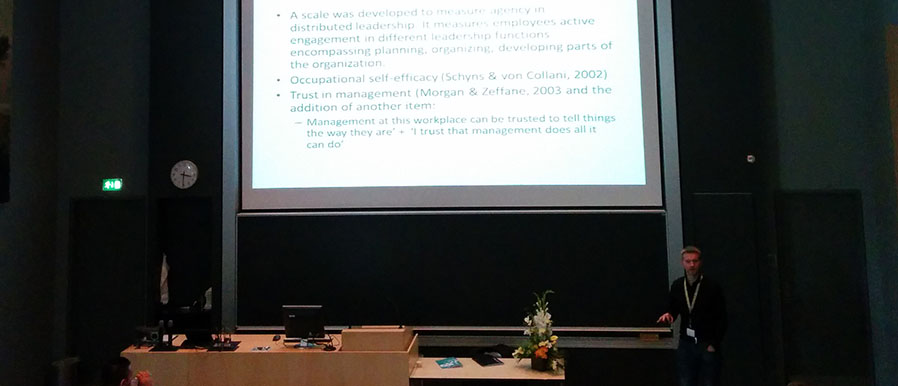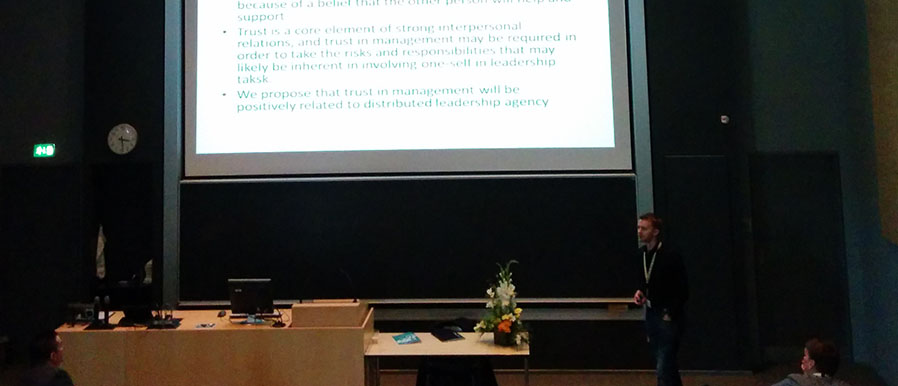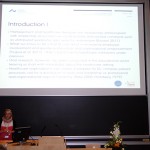Looking at Leadership Predictors within the Danish Healthcare, with Ajay Jain, Hans Jeppe Jeppesen and Thomas Jønsson, at the 2014 PMA Conference
“Self-Efficacy and Vertical Trust as Predictors of Distributed Leadership in Danish Helath Care Context” is the name of the presentation, brought by Ajay K. Jain and Hans Jeppe Jeppesen, of the Indian Management Development Institute, and Thomas Jønsson, of the Aarhus University, on the 2nd day of the 2014 PMA Conference.
The presentation brought knowledge about the impact of self-efficacy and trust in authority, as micro and macro variables for leadership within the context of major organizational restructuring. The setting they have worked with is 4 Danish hospital units.
More than 1400 participants answered to different questionnaires on trust and self-efficacy, along with the Distributed Leadership Questionnaire, which was developed for the purpose of the study.
Their findings suggest that there is a need to stimulate employee self-efficacy and vertical trust levels, in order to increase their participation in leadership tasks, which are crucial for a high performing organization.
They presented a 3-fator model, in which trust, self-efficacy and distributed leadership were inter-connected, within the following pattern:
- Distributed leadership is strongly, and positively, related to occupational self-efficacy and trust in the unit’s administration;
- Self-efficacy generates a significant impact on employee involvement in leadership, as it implies positive expectations towards one’s outcomes which reduce risk-avoidance behavior associated with people with lower self-efficacy levels;
- Vertical trust best explains fluctuations in the employees’ involvement in leadership tasks, as this variable acts as a catalyst, directing and consolidating the potential generated from higher levels of occupational self-efficacy.

The essential mention the authors make is the fact that both these variables need to be stimulated in order to insure employee involvement in leadership tasks. In their opinion a culture of trust and cooperation, along with stimulating self-efficacy drafts higher motivation for participation within leadership activities.

Tags: Healthcare performance, Performance Management, PMA 2014 Conference







